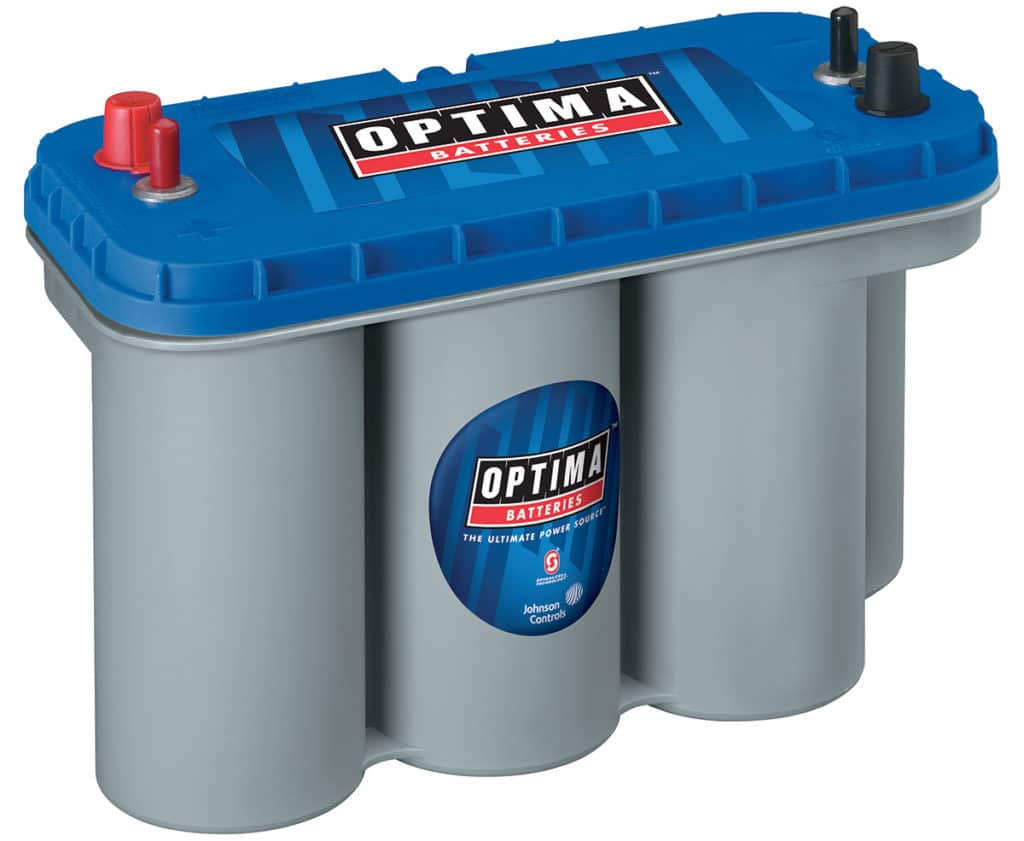
The batteries for a performance boat undergo more punishment than those used aboard many other craft. The high speeds and often-rough water combine to foreshorten battery life. Here’s what to look for in a performance-boat battery — or really any marine battery from which you want the utmost reliability and safety.
1. Boat batteries need sufficient cranking amps (CA) to start the engine or engines. Your engine’s manual, dealer or manufacturer can supply this information. The cranking amp is the discharge load a fully charged battery can deliver in 30 seconds. There is no need to purchase more CA than you need.
2. Absorbed glass mat (AGM) batteries, such as Optima Blue Top batteries (pictured), contain the electrolyte (aka “acid”) in a spongelike roll of fiberglass. The electrolyte is almost completely prevented from spilling or splashing, even if the battery cracks or gets turned upside down.
3. AGM batteries provide more power per pound and dimensional size than traditional flooded electrolyte batteries, and their internal construction allows them to withstand the pounding of high seas and high speeds better too. AGMs also do not require added water.
4. Reserve capacity (RC) is the number of minutes a fully charged battery at 80 degrees F is discharged at 25 amps before the voltage falls below 10.5 volts. To convert RC into amp hours at the 25-amp rate, multiply RC by 0.4167.
5. An amp hour (Ah) is the amount of energy charge in a battery that will allow one ampere of current to flow for one hour. This is important for gauging the ability to power electrical equipment without the engine or generator running. A battery rated for 100 Ah at 20 hours can discharge for 20 hours with a 5-amp load.
6. Should boaters use an automotive battery in a marine application? We recommend not doing this, primarily due to the excess pounding and vibration experienced aboard a boat. A marine battery’s threaded terminals more securely hold cables than the smooth posts of an auto battery. Also, marine batteries feature more durable plate construction, so they are less likely to suffer an internal short.
Quick Tip: Cold cranking amps are rated at 0 degrees F. Marine cranking amps are measured at 32 degrees F.









